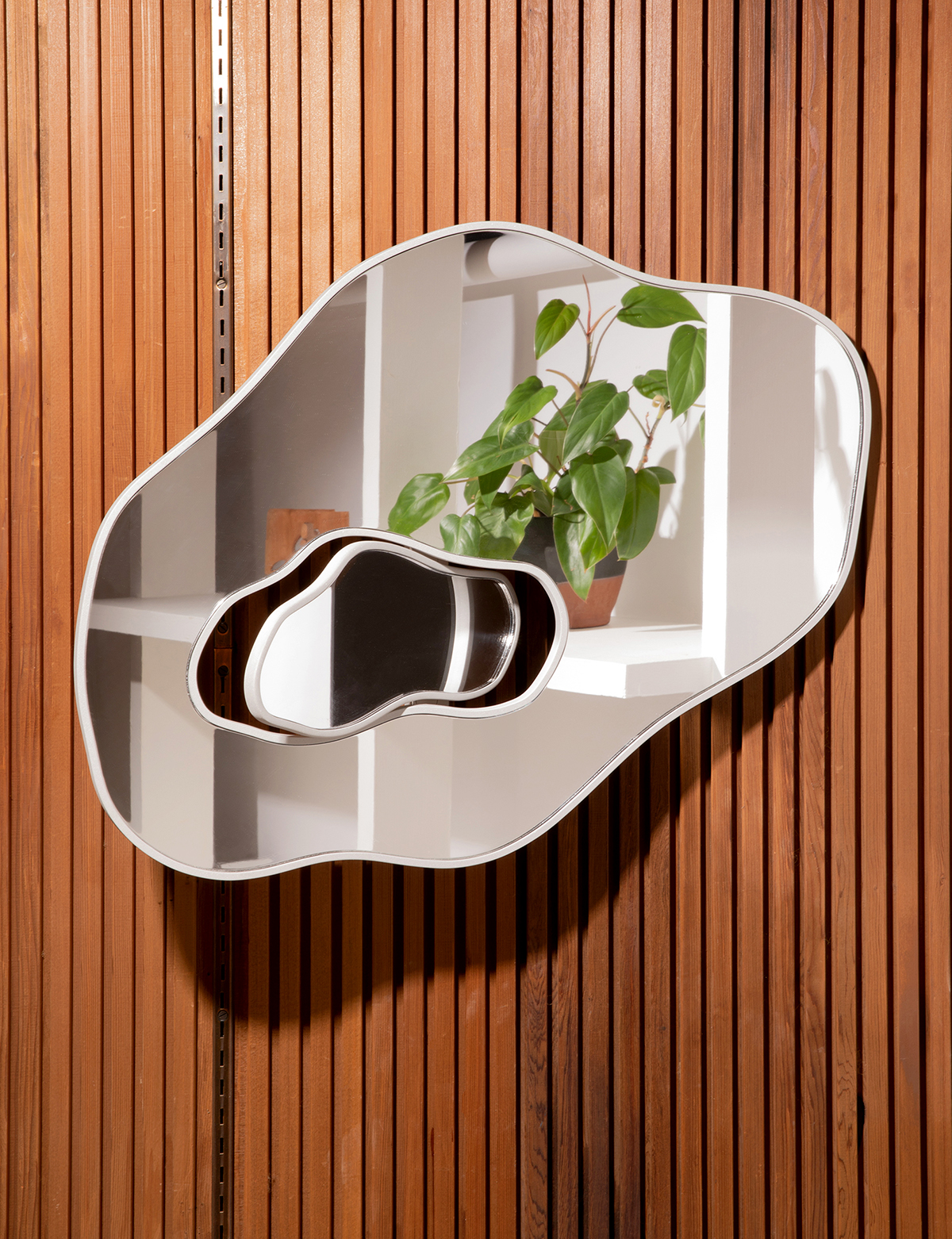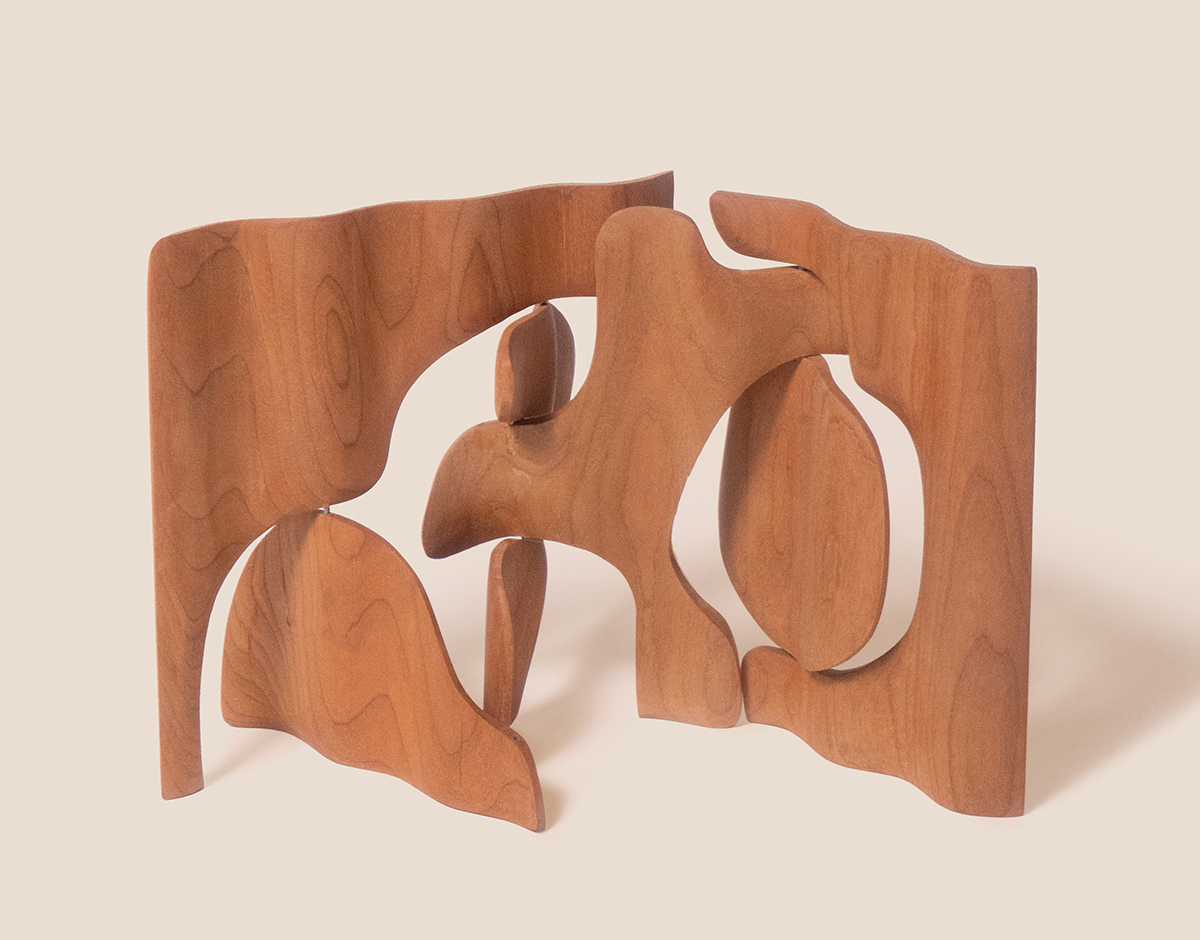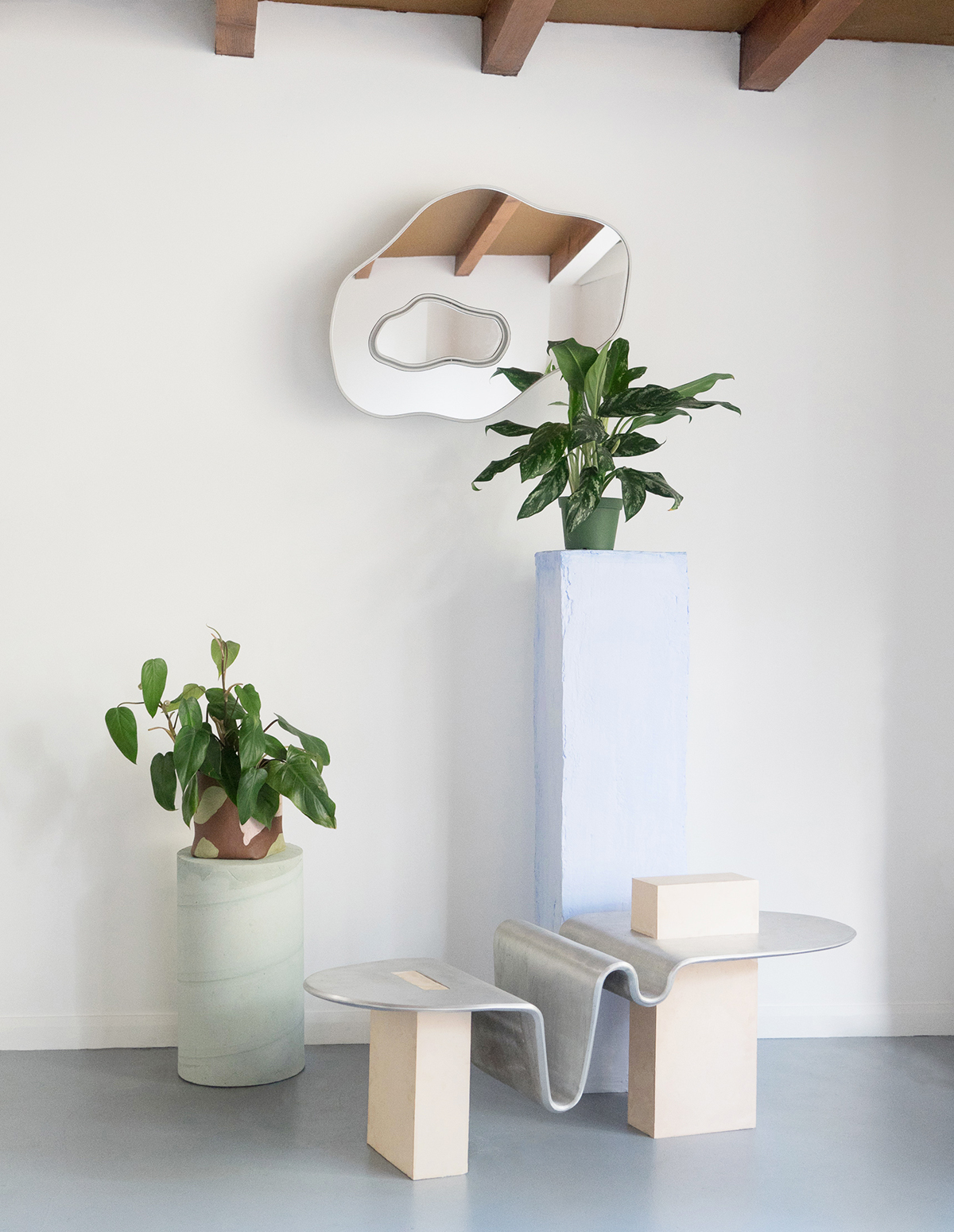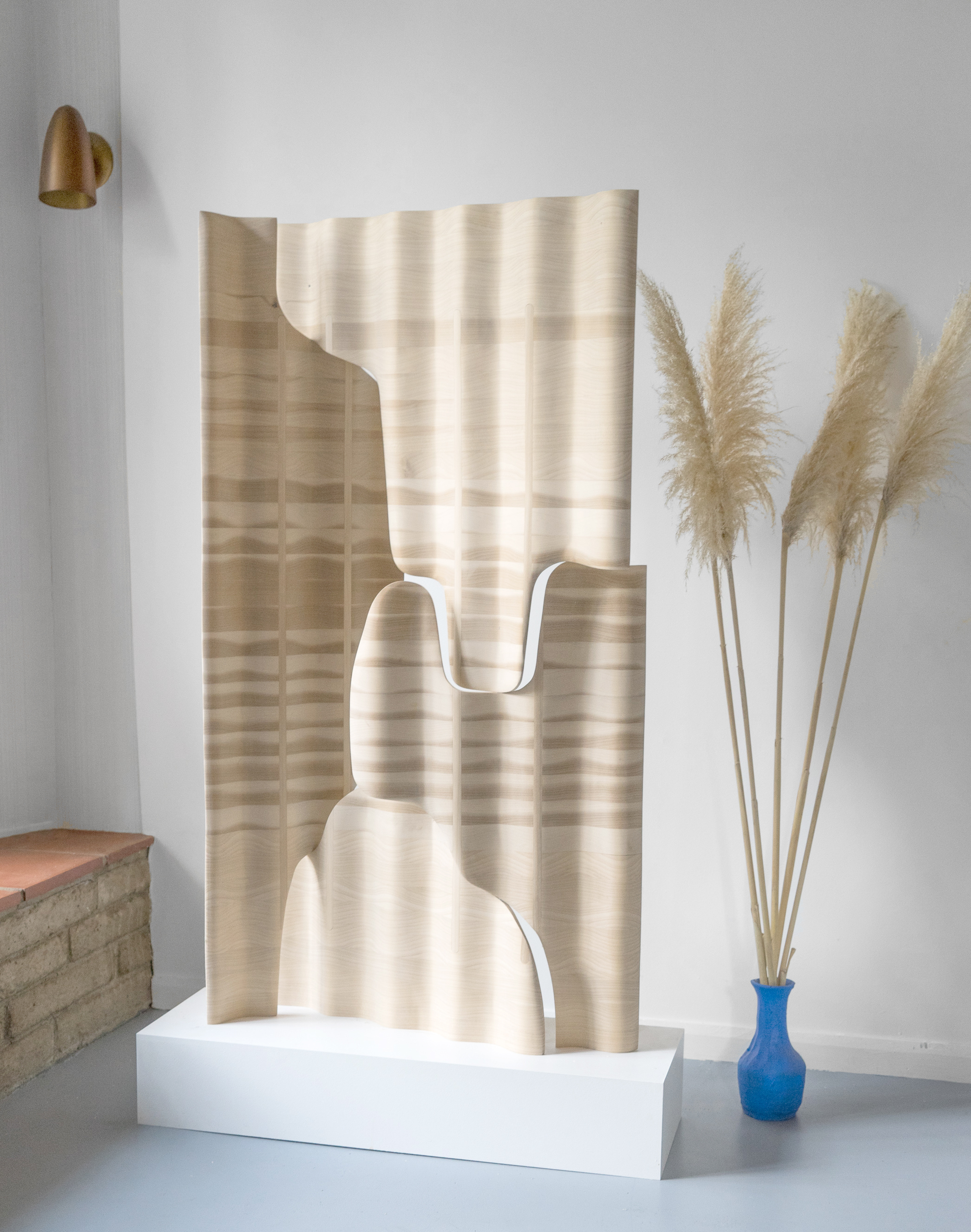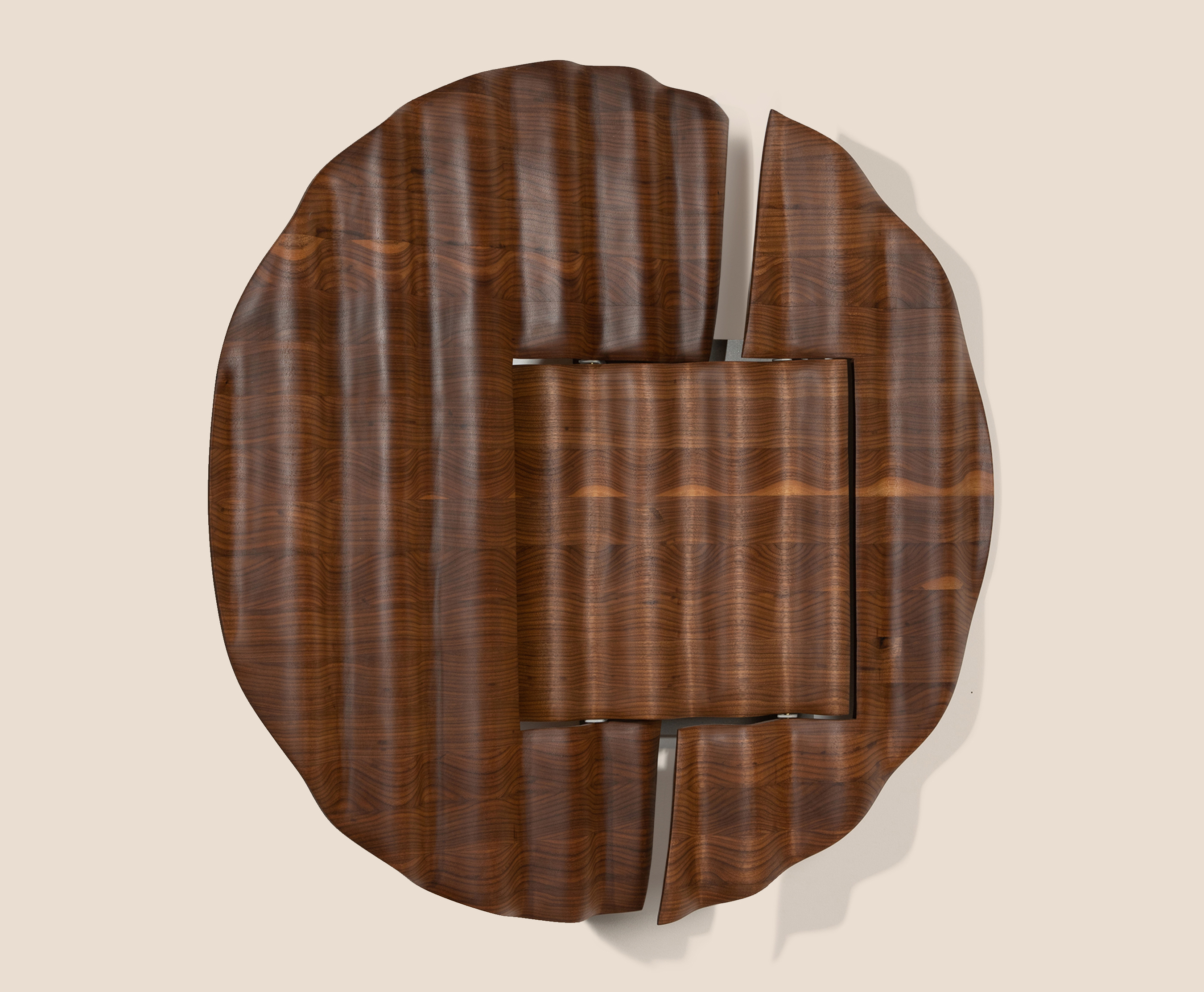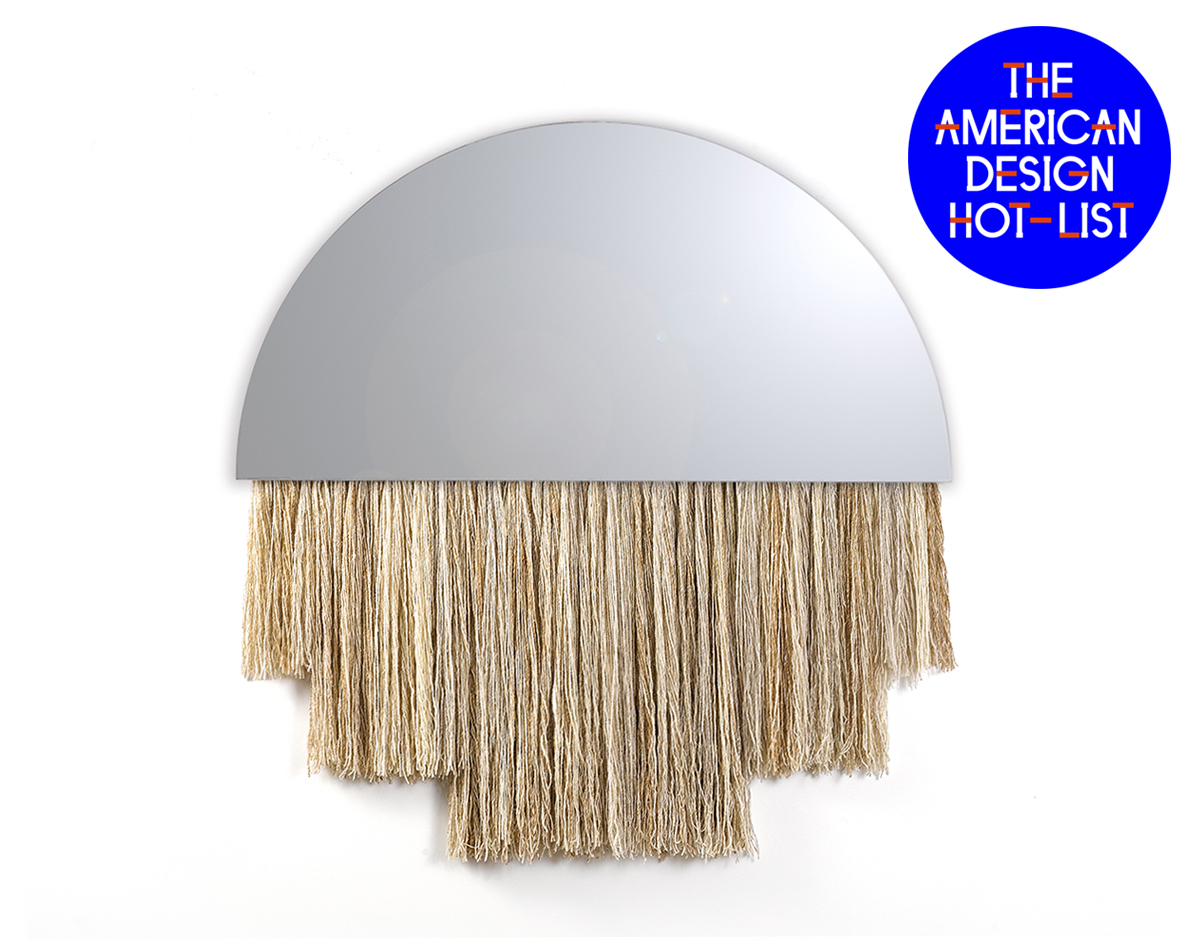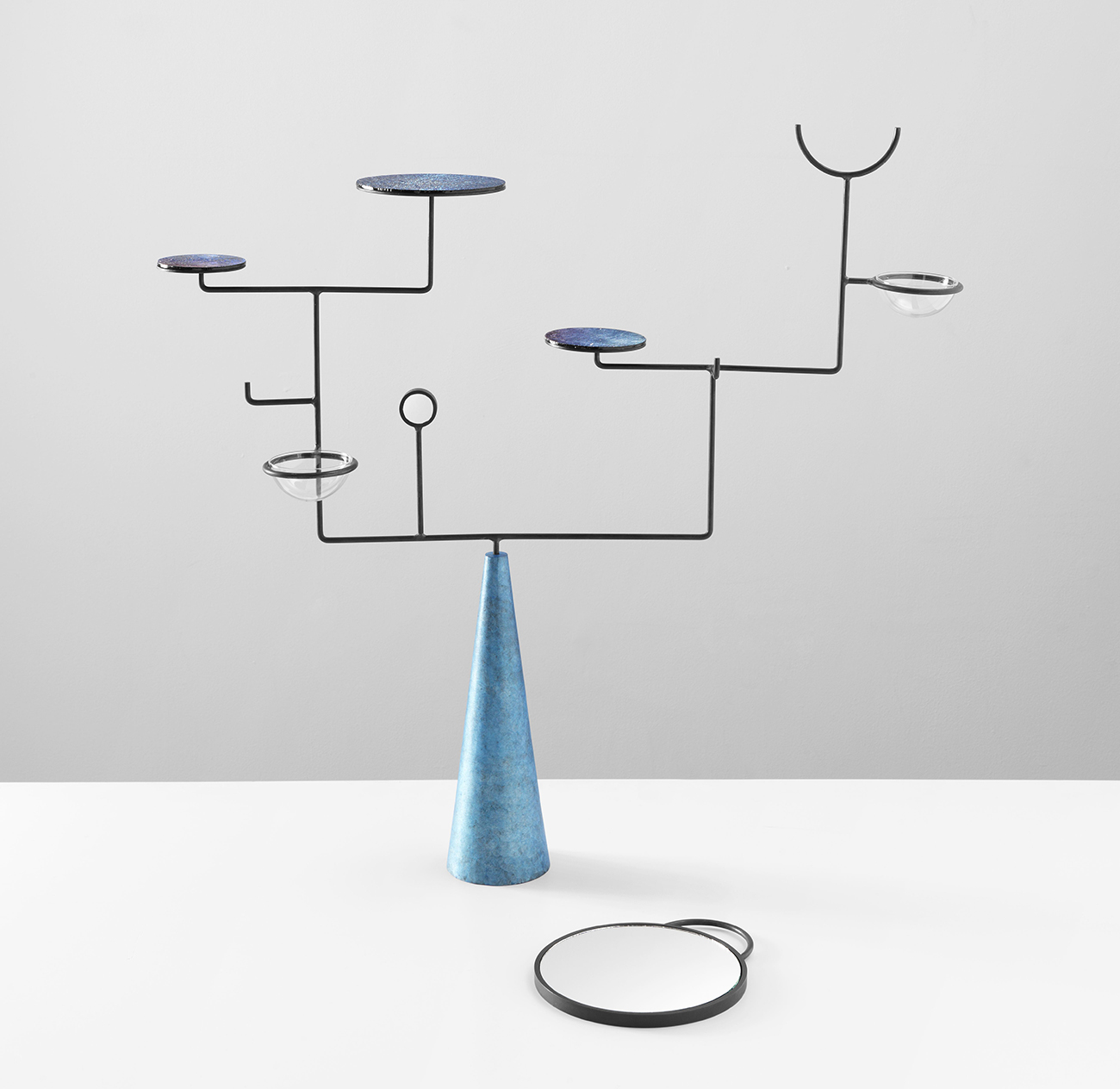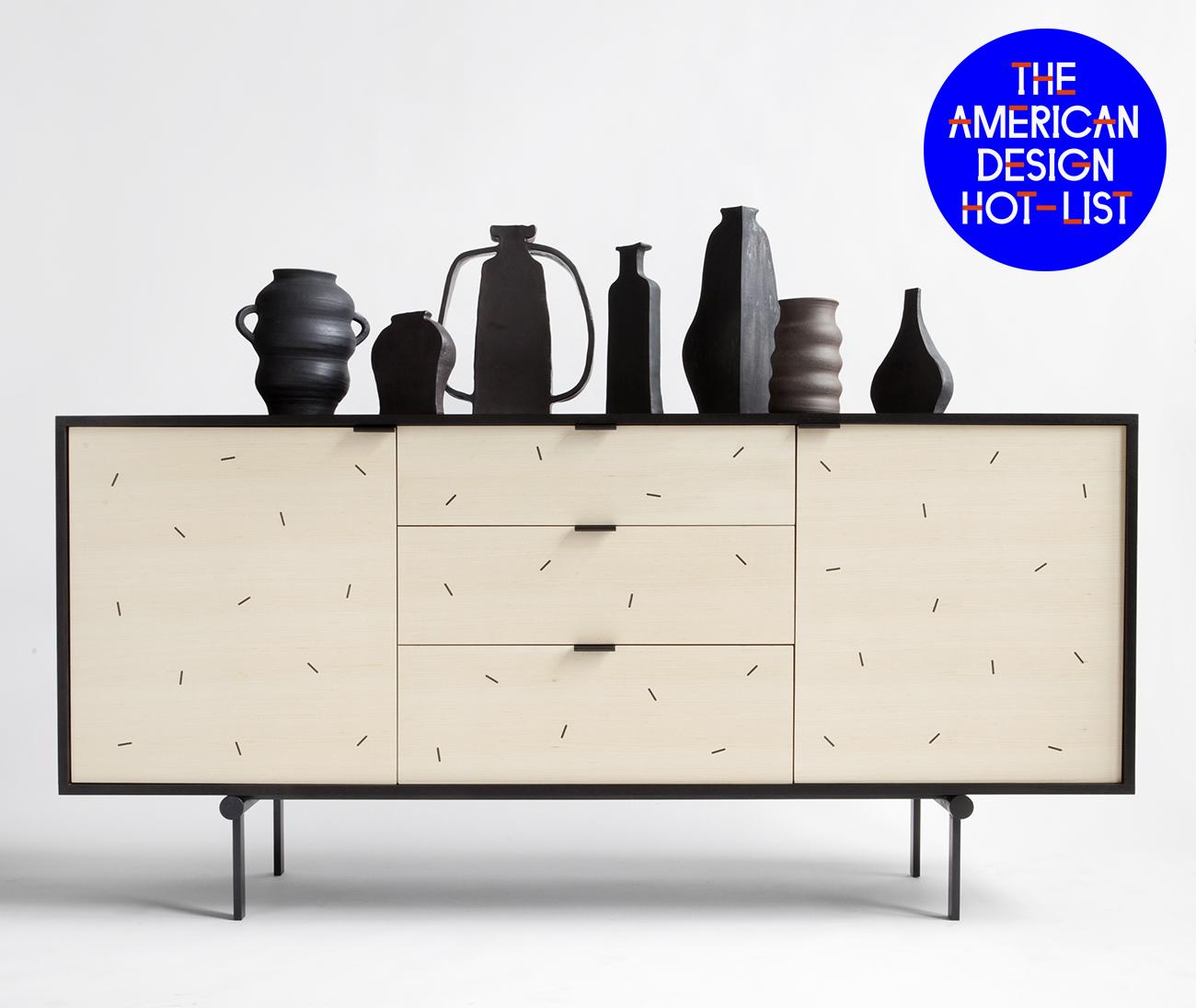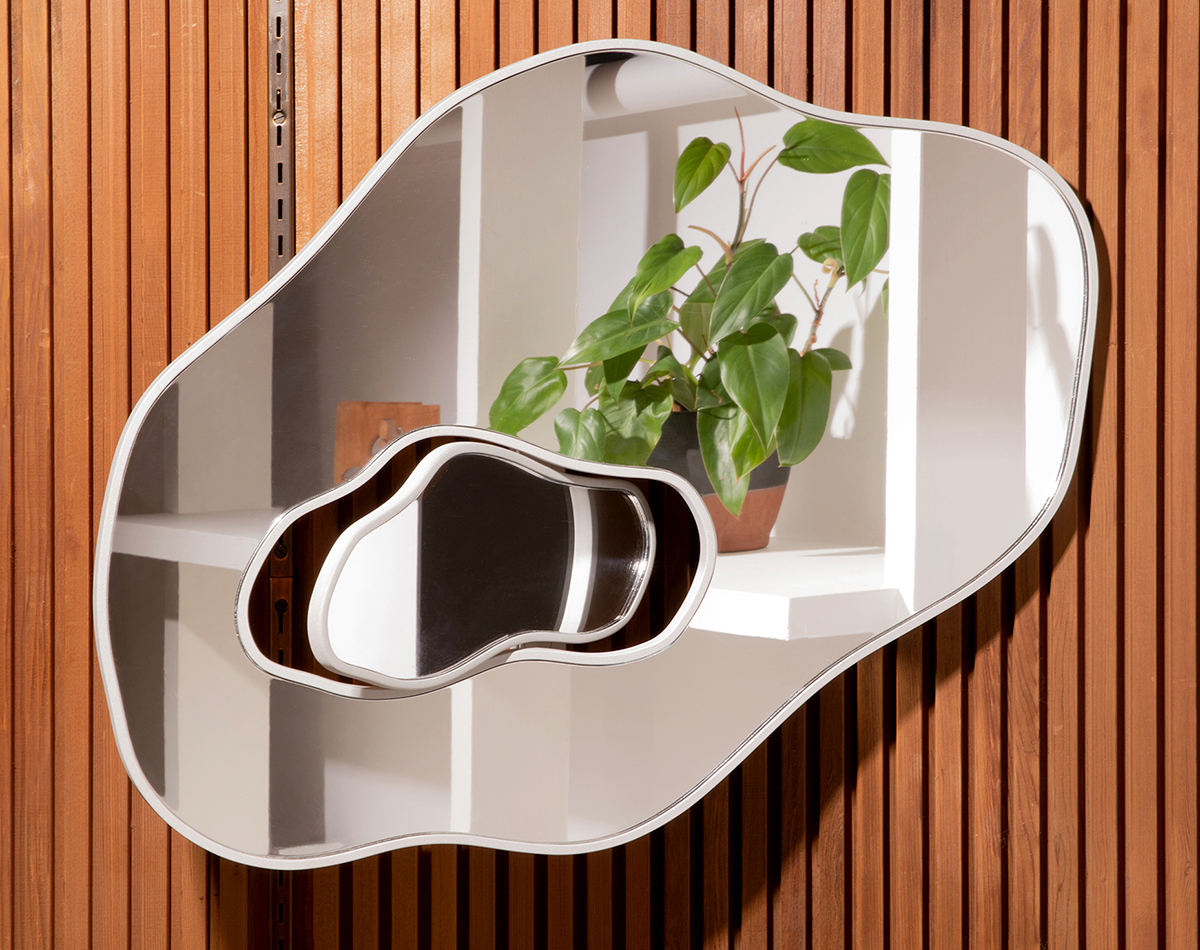
American Design Hot List 2019
Ben Tetro
Los Angeles, bentetro.com
L.A. newcomer Ben Tetro says that his biggest inspiration is making objects by hand out of traditional natural materials, much like the boat builders of his native Maine. But there’s nothing traditional about his inventive organic forms, which appear throughout his kinetic mirrors, wall sculptures, and room dividers — plus a sine-wave table in aluminum and cement.
What is American design to you, and what excites you about it?
Design is an openness to diversity of all forms — from the materials we source and the design process to the people we connect with along the way. I see a movement, particularly in California, of self-representation and a shift to direct-to-client relationships, and that offers a lot of potential for individual growth. I see this in the prevalence of design galleries and in the push for designers to be truly invested in their craft and to possess the broad knowledge that good design requires. We now have the ability to tap into a community that shares and supports individuality, and this inevitably allows artists and designers to design with purpose. For me, American design is about creating sustainability by way of permanence; I see a rebirth in the passion for materiality and a distancing from the disposable.
What are your plans and highlights for the upcoming year?
I’m working on a new series in tandem with existing works that combine contrasting materials, allowing for a bit of playful interaction. I’m also collaborating with my partner, the artist Kenesha Sneed, on a limited-edition collection for a New York–based company set to be released this spring.
What inspires or informs your work in general?
As a problem solver at heart, I’m inspired by research. Learning about materials and how they interact, and finding unique solutions, is part of my process. I grew up in southern Maine and was inspired by being in close proximity to traditional craftspeople. My family included boat builders, fishermen, and a great uncle who spent much of his life hand-carving duck decoys, and this informed my views of what a solid work ethic looked like — and inevitably translates through much of my work today.
I’m always interested in the balance between permanence and fragility, connection systems, and how dissimilar materials can live together, balancing one another. Ultimately, I’m inspired by the ideation process, which I find just as transformative as the final form.